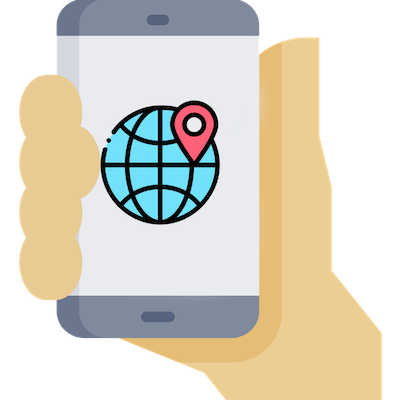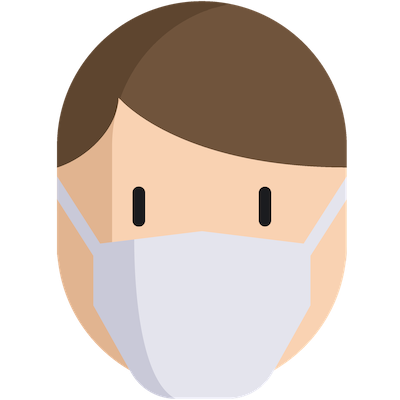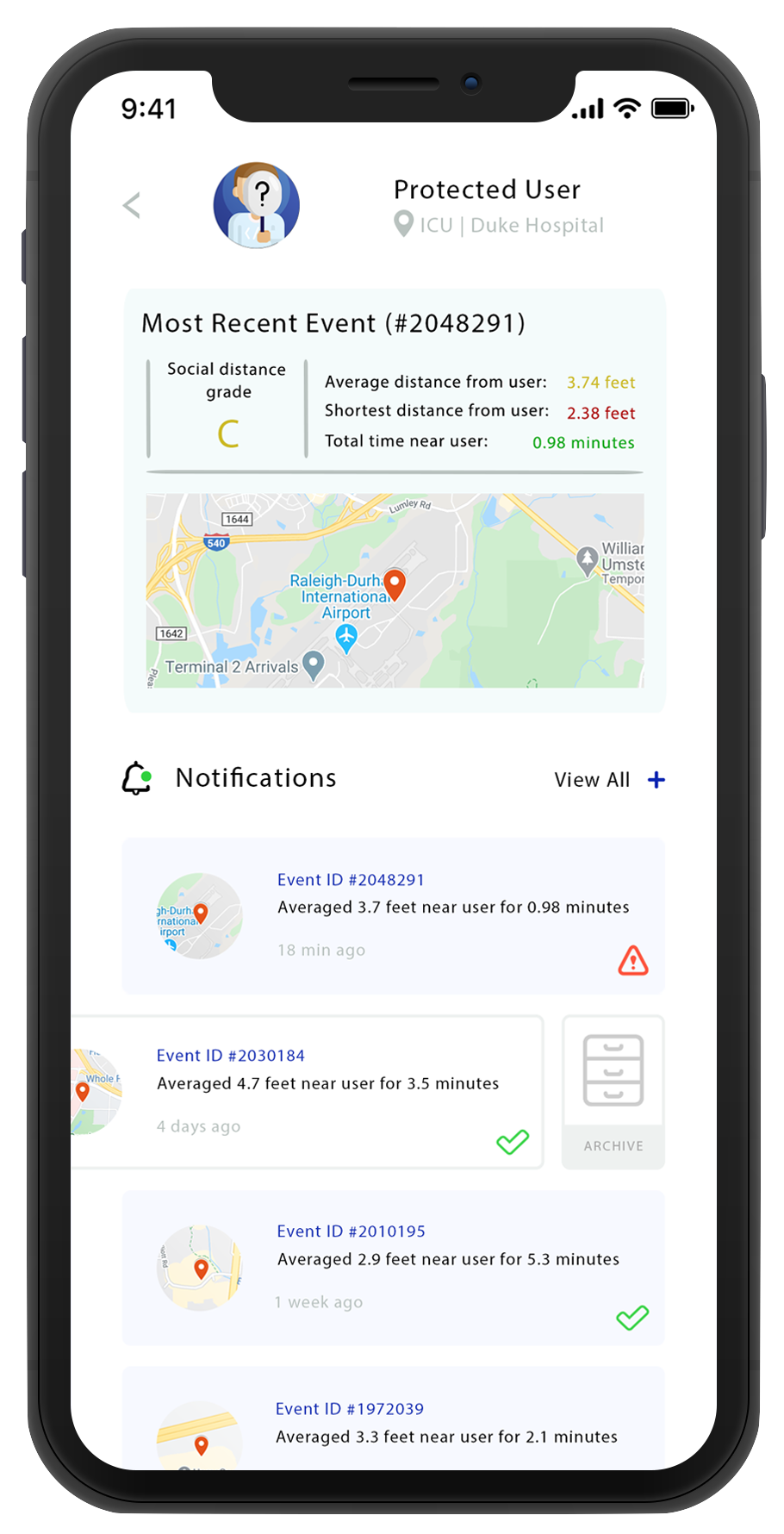
A group of fellow Duke students and I created the mobile app, ContainIt: a contact-tracing application that helps mitigate the spread of COVID-19. We use location history to identify high-risk interactions with others infected with COVID-19.
When a user self-identifies (and is verified) as being infected, they consent to share their location data
to help back-trace their interaction(s) with other users.
Using contact-tracing algorithms, we analyze potential contact events and provide users with notifications
and actionable insight.






The algorithms I developed transform user data into digestible information that protect users from serious contact events and enable real-time feedback about their proximity to other people. Summary information about each contact event is displayed to the user based on their social distancing habits compared to CDC and WHO guidelines.

This approach to contact tracing not only benefits users. Our analytical tools can provide public health and life science divisions with epidemiological insight that both verifies data-driven solutions and supports better-informed decisions.

Even minor interactions often don't meet safe social distancing requirements.
Example: the simulation below shows two people entering and aisle in a supermarket. Person B (blue) tries to practice social distancing, but ends up near Person A (red) for a brief period of time.


I developed contact-event algorithms to isolate incident events from location data. The data is then processed to output actionable information.
For more information about the algorithms visit this page.
This analysis enables users to learn from their contact events and receive real-time feedback. We also inform public health and life science divisions about COVID-19 transmission hotspots and the general public's practice of social distancing.
